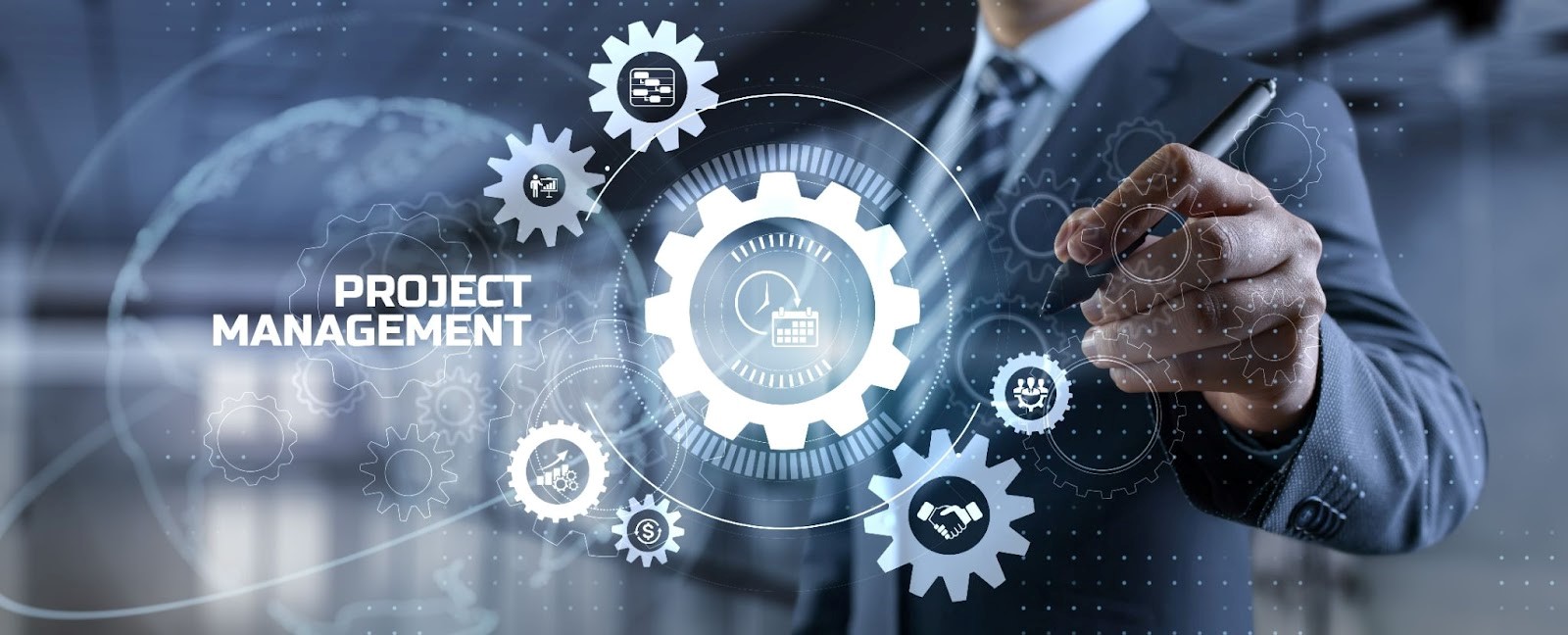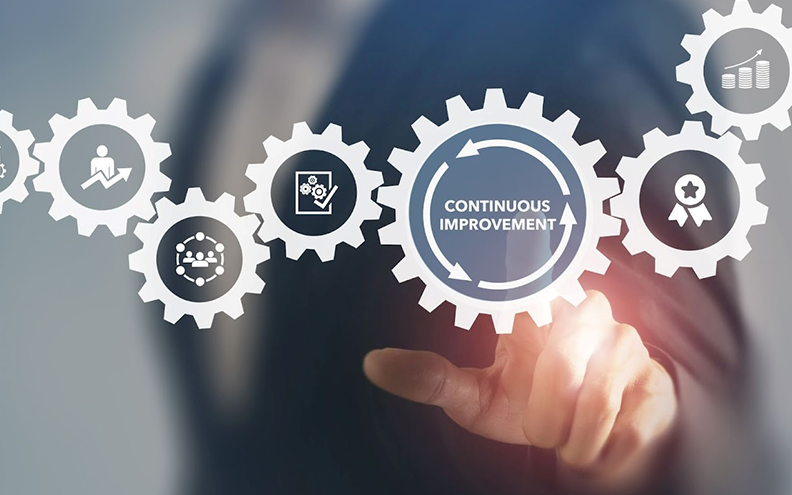Imagine implementing a PMIS to streamline your processes, enhance collaboration, and boost efficiency. The system goes live, and the company experiences immediate improvements. However, as time passes and the organization grows and evolves, there’s always room for further refinement. How? The answer is simple – implementation is just the beginning. Continuous improvement and post-implementation optimization are crucial in ensuring continuous compliance with the dynamic requirements of your projects and team.
We are going to dive deep into the indispensability of post-implementation optimization and the numerous ways in which it can maximize the value of your PMIS through continuous improvement strategies.
The Crucial Role of PMIS in Project Success
PMIS is the backbone of the entire capital project ecosystem. It supports project planning, execution, monitoring, and completion, enabling real-time access to project information. It offers a versatile platform for handling information and data storage in various formats. Additionally, it facilitates team member and stakeholder communication management and helps make informed decisions for successful project execution. Project managers use PMIS to strategize, track progress, and ensure alignment with project goals, ultimately improving overall efficiency and effectiveness.
Why Post-Implementation of PMIS Adoption is Critical
The success of a PMIS is often determined by how effectively project team members adopt and use it once it has been implemented. The post-implementation aspect is significant, as the system has to meet changing project needs and organizational growth. Continuous PMIS optimization is necessary to realize the system’s full potential through proper adoption.
Benefits of PMIS Post-Implementation Review
1. Enhancing System Efficiency and Functionality
As project requirements change, so do the needs of your PMIS. Regular reviews ensure the system remains efficient and updated to reflect new project goals and operational demands.
2. Ensuring Long-Term Success and Alignment with Evolving Project Needs
Projects evolve, and your PMIS should, too. PMIS Post-implementation reviews help organizations better adapt their systems to new workflows and business needs, ensuring long-term value.
3. Improving Decision-Making through Up-to-Date Data
Keeping your PMIS optimized allows for real-time data updates, providing accurate information for better decision-making at all project management levels.
4. Supporting Compliance with New Regulations
Regulations in industries like construction or government often change. Regular PMIS evaluations help ensure your system complies with current legal and regulatory requirements.
Also Read: Best Practices for Successful PMIS Implementation in Capital Projects
Assessing Your PMIS: Is It Time for a Revitalization?
Continuous improvement mainly starts with a self-assessment of the current PMIS. But what signals can you use to help you determine that it is time to revitalize your system? Below are some measures that need to be considered.
Key Indicators That Signal a Need for Revitalization:
- Decreased user engagement: If project managers and team members are not fully utilizing the system, it may indicate that the PMIS is not user-friendly or fails to meet their needs.
- Frequent errors or inefficiencies: A growing number of errors, system downtime, or inefficiencies in workflow processes could signal that the PMIS needs optimization.
- Outdated technology or integrations: As technology evolves, your PMIS may become outdated, resulting in compatibility issues with other software systems or a lack of integration with new tools.
- Compliance Gaps: Regulatory requirements evolve, and if your PMIS hasn’t been updated to align with current standards, it may pose a compliance risk.
- Inability to scale: If your PMIS struggles to keep up with growing project demands or additional users, it’s a clear sign that optimization is required.
- Feedback from stakeholders: Regular feedback from user indicating issues with functionality or suggesting areas for improvement should be taken seriously.
Practical Techniques for Optimizing Your PMIS

1. Regular System Audits: Conduct periodic audits to evaluate system performance, data accuracy, and alignment with current project needs. This will help identify issues before they impact project outcomes.
2. Modular Upgrades: Implement modular upgrades rather than overhauling the entire system. This ensures your PMIS remains current with the latest technology while minimizing disruptions.
3. Training and Support: End-user proficiency directly impacts the effectiveness of your PMIS. Regular PMIS training ensures that team members fully utilize the system’s capabilities.
Developing a Structured Approach for PMIS Improvement:
- Assessment: Start by conducting a comprehensive assessment of your PMIS, emphasizing system flaws, inefficiencies, and areas for improvement. The aim is to find better ways for the system to support project goals and adapt to evolving organizational needs, ensuring continuous alignment with business objectives.
- Prioritization: After identifying improvement areas, rank them based on their potential impact on project success. Prioritizing critical fixes ensures that the most pressing issues are addressed first, helping to optimize system performance and ensuring that improvements deliver the most significant benefit.
- Implementation: Develop a clear, structured plan for implementing system improvements. Roll out enhancements in manageable phases, allowing teams to adopt new functionalities gradually. This phased approach minimizes disruptions while ensuring the improvements are thoroughly tested and effectively integrated into existing workflows.
- Monitoring: Post-implementation, consistently monitor the performance of the updated PMIS. Track system functionality, user feedback, and data accuracy to assess the effectiveness of changes. Regular monitoring helps identify new issues and ensures ongoing user satisfaction, allowing for timely adjustments.
Requirement of Governance in Continuous Improvement
- Creating a Governance Structure: A dedicated governance structure is required to ensure your PMIS stays relevant and efficient. This includes forming a governance committee overseeing system updates, compliance, and user feedback.
- Establishing Strong PMIS Governance: Your governance structure should include stakeholders from different levels of the organization, ensuring that any changes made to the PMIS reflect the needs of various departments and teams.
Benefits of Governance in Continuous Improvement
A robust governance framework plays a critical role in the continuous improvement of your PMIS.
1. Consistency and Structure: Governance ensures that all modifications and enhancements follow a set procedure, preventing unplanned upgrades that may disrupt projects.
2. Enhanced Accountability and Transparency: Clear governance guidelines ensure that all PMIS managers know their roles, increasing transparency and accountability.
3. Alignment with Organizational Goals: Governance helps ensure that system updates align with the organization’s broader goals, preventing the PMIS from evolving in a way that hinders business objectives.
4. Regulatory Compliance: A robust governance framework lowers the possibility of compliance issues by ensuring that all system modifications follow legal and regulatory requirements.
Navigating Compliance Challenges with Your PMIS
- Understanding Compliance Risks: Compliance requirements can shift with new laws or standards, posing risks for projects that rely on outdated systems. Ensuring that your PMIS is up to date will mitigate these risks.
- Strategies for Seamless Updates: Ensure your PMIS is equipped with a flexible, scalable architecture to implement updates—whether for compliance or functionality—without disrupting daily operations.
Harnessing End-User Feedback for Continuous Improvement
- The Value of User Input:
The PMIS users possess significant practical knowledge about what functions well and what doesn’t. It’s essential to consider their feedback for continuous improvement. - Effective Feedback Collection:
Use various methods to get feedback, including focus groups, questionnaires, and one-on-one conversations. This makes it easier to ensure a thorough comprehension of the user’s needs. - Incorporating Feedback into System Updates:
After gathering feedback, order it according to the frequency with which it is raised and how it affects the project’s results. This input should directly influence future system upgrades and optimizations.
Conclusion
Your PMIS is more than just a tool—it’s the backbone of your project’s success. But to unlock its full potential, continuous improvement is essential. Regular assessments, modular upgrades, and user feedback can transform your system from functional to exceptional, aligning it with evolving project needs. The journey of PMIS optimization is ongoing, and with the right guidance, strategies, and tools, your organization can fully realize the benefits of a robust and efficient PMIS system. Partner with OnIndus for tailored post-implementation strategies for continuous improvement.

